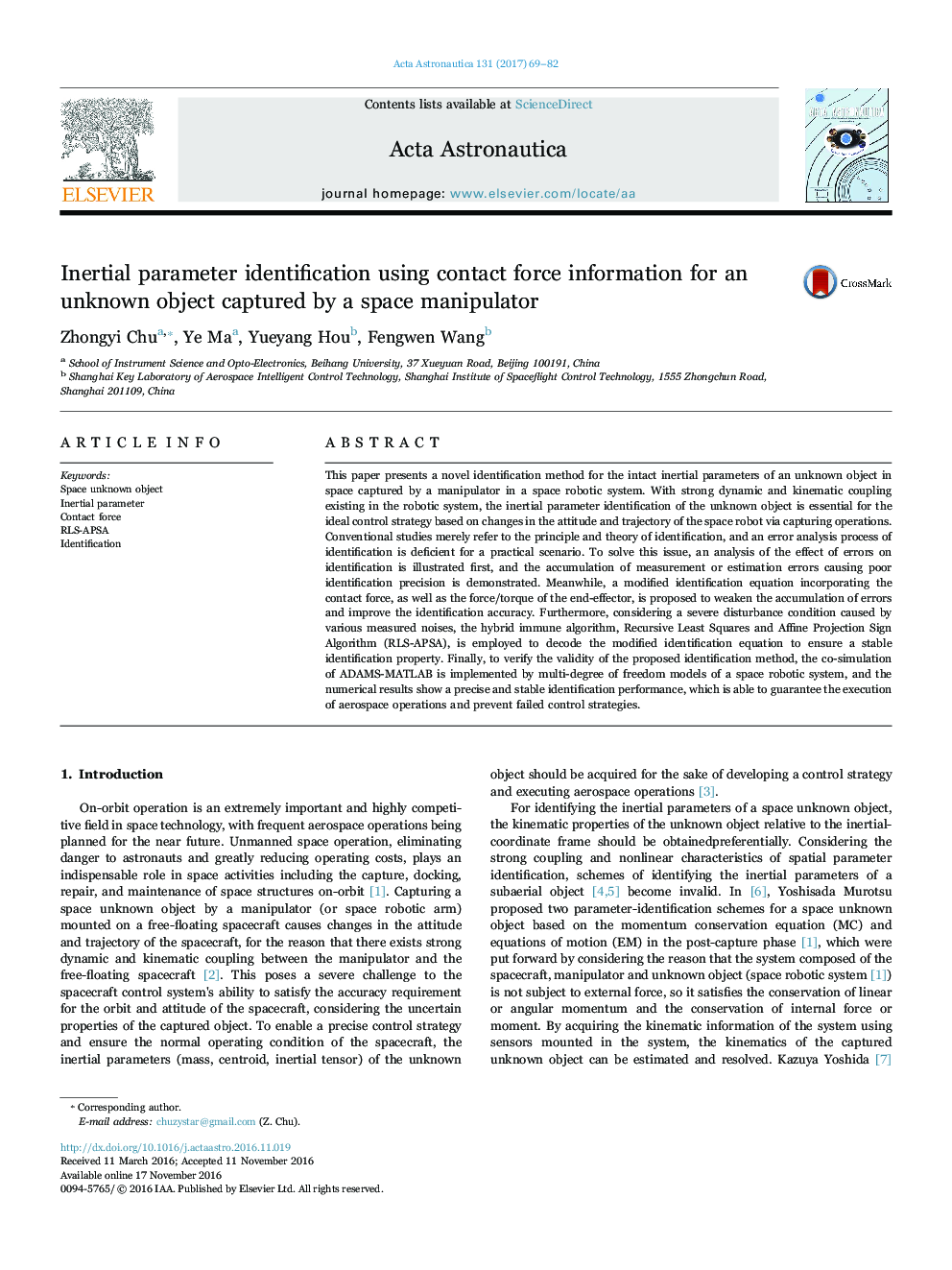| Article ID | Journal | Published Year | Pages | File Type |
|---|---|---|---|---|
| 5472199 | Acta Astronautica | 2017 | 14 Pages |
â¢The accumulated errors dominate identification precision of space unknown object.â¢A novel identification scheme via contact force and RLS-APSA is proposed.â¢The inertial parameter identification performance is verified by co-simulation.
This paper presents a novel identification method for the intact inertial parameters of an unknown object in space captured by a manipulator in a space robotic system. With strong dynamic and kinematic coupling existing in the robotic system, the inertial parameter identification of the unknown object is essential for the ideal control strategy based on changes in the attitude and trajectory of the space robot via capturing operations. Conventional studies merely refer to the principle and theory of identification, and an error analysis process of identification is deficient for a practical scenario. To solve this issue, an analysis of the effect of errors on identification is illustrated first, and the accumulation of measurement or estimation errors causing poor identification precision is demonstrated. Meanwhile, a modified identification equation incorporating the contact force, as well as the force/torque of the end-effector, is proposed to weaken the accumulation of errors and improve the identification accuracy. Furthermore, considering a severe disturbance condition caused by various measured noises, the hybrid immune algorithm, Recursive Least Squares and Affine Projection Sign Algorithm (RLS-APSA), is employed to decode the modified identification equation to ensure a stable identification property. Finally, to verify the validity of the proposed identification method, the co-simulation of ADAMS-MATLAB is implemented by multi-degree of freedom models of a space robotic system, and the numerical results show a precise and stable identification performance, which is able to guarantee the execution of aerospace operations and prevent failed control strategies.
